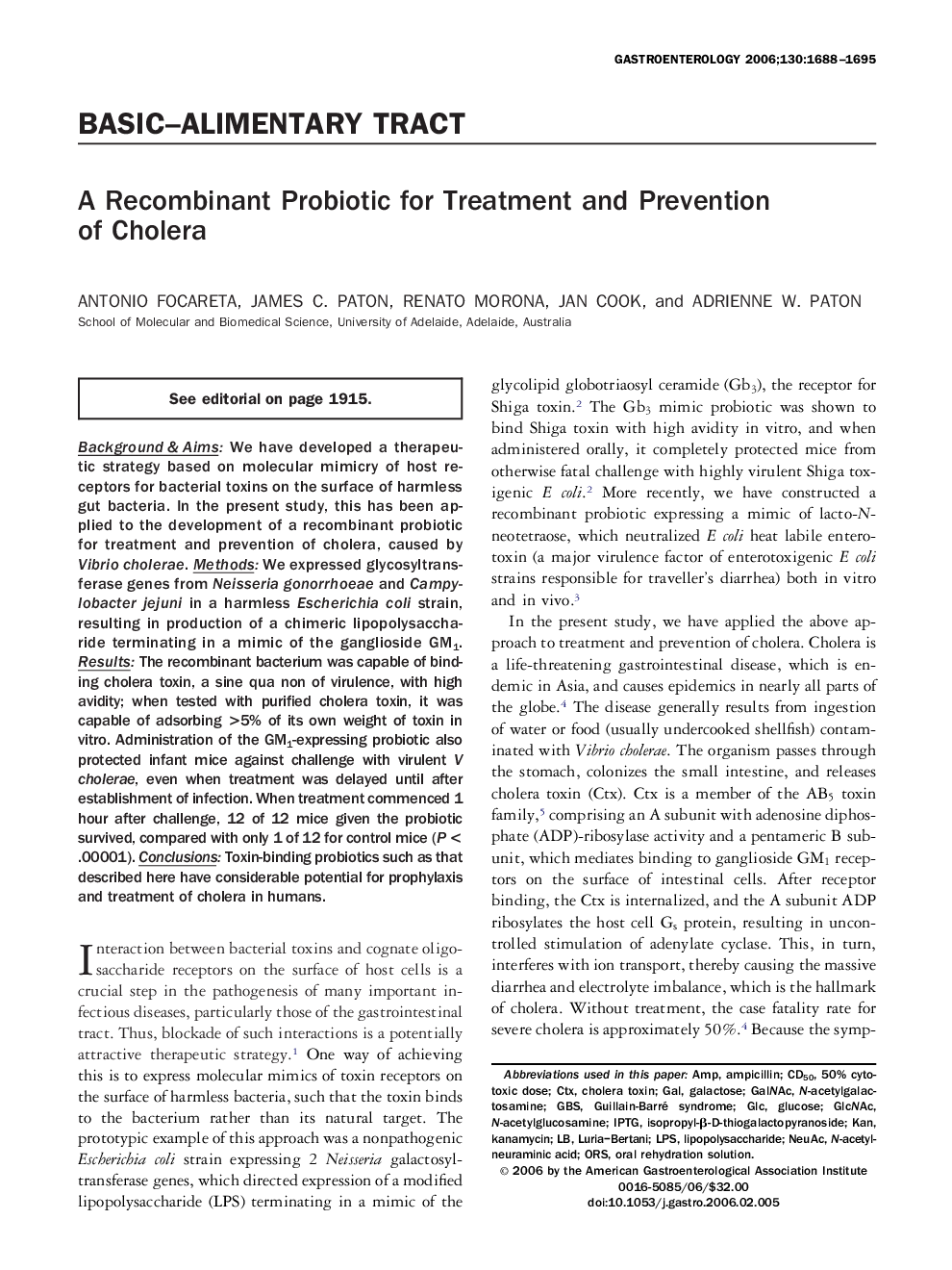| Article ID | Journal | Published Year | Pages | File Type |
|---|---|---|---|---|
| 3297625 | Gastroenterology | 2006 | 8 Pages |
Background & Aims: We have developed a therapeutic strategy based on molecular mimicry of host receptors for bacterial toxins on the surface of harmless gut bacteria. In the present study, this has been applied to the development of a recombinant probiotic for treatment and prevention of cholera, caused by Vibrio cholerae. Methods: We expressed glycosyltransferase genes from Neisseria gonorrhoeae and Campylobacter jejuni in a harmless Escherichia coli strain, resulting in production of a chimeric lipopolysaccharide terminating in a mimic of the ganglioside GM1. Results: The recombinant bacterium was capable of binding cholera toxin, a sine qua non of virulence, with high avidity; when tested with purified cholera toxin, it was capable of adsorbing >5% of its own weight of toxin in vitro. Administration of the GM1-expressing probiotic also protected infant mice against challenge with virulent V cholerae, even when treatment was delayed until after establishment of infection. When treatment commenced 1 hour after challenge, 12 of 12 mice given the probiotic survived, compared with only 1 of 12 for control mice (P < .00001). Conclusions: Toxin-binding probiotics such as that described here have considerable potential for prophylaxis and treatment of cholera in humans.
